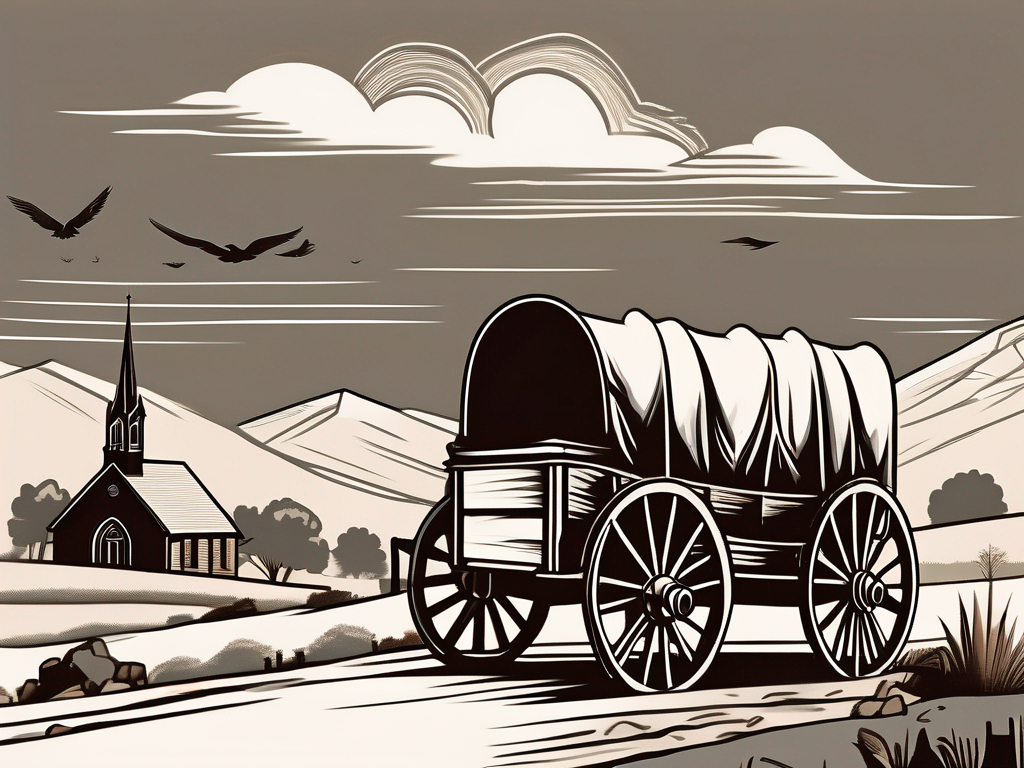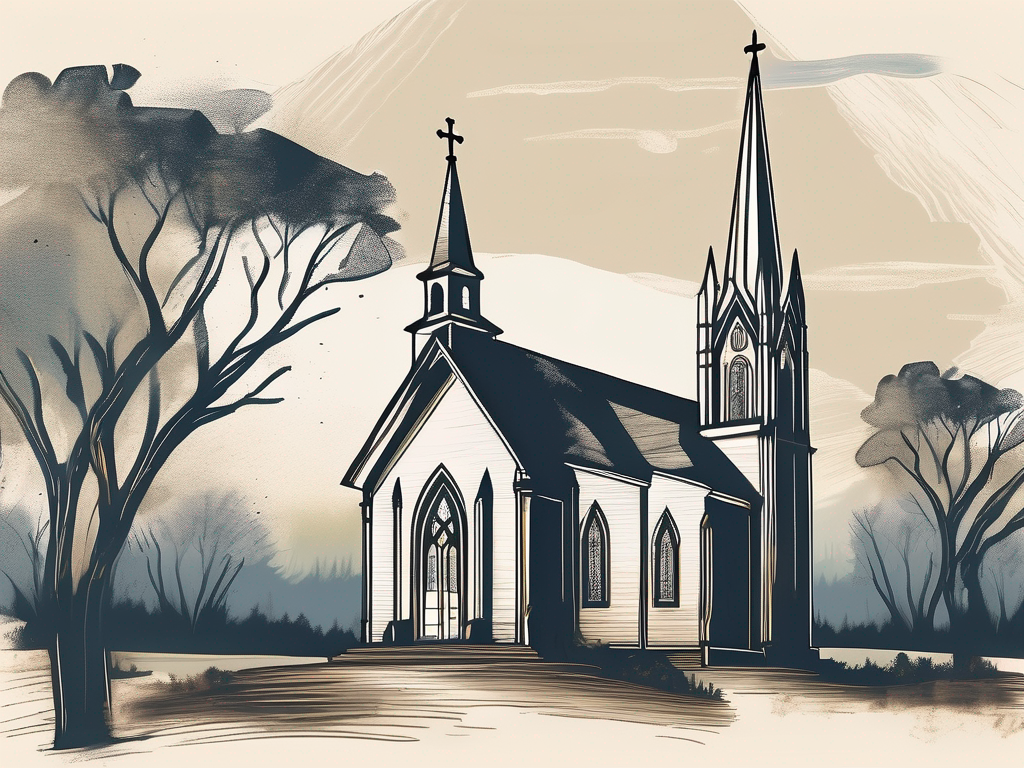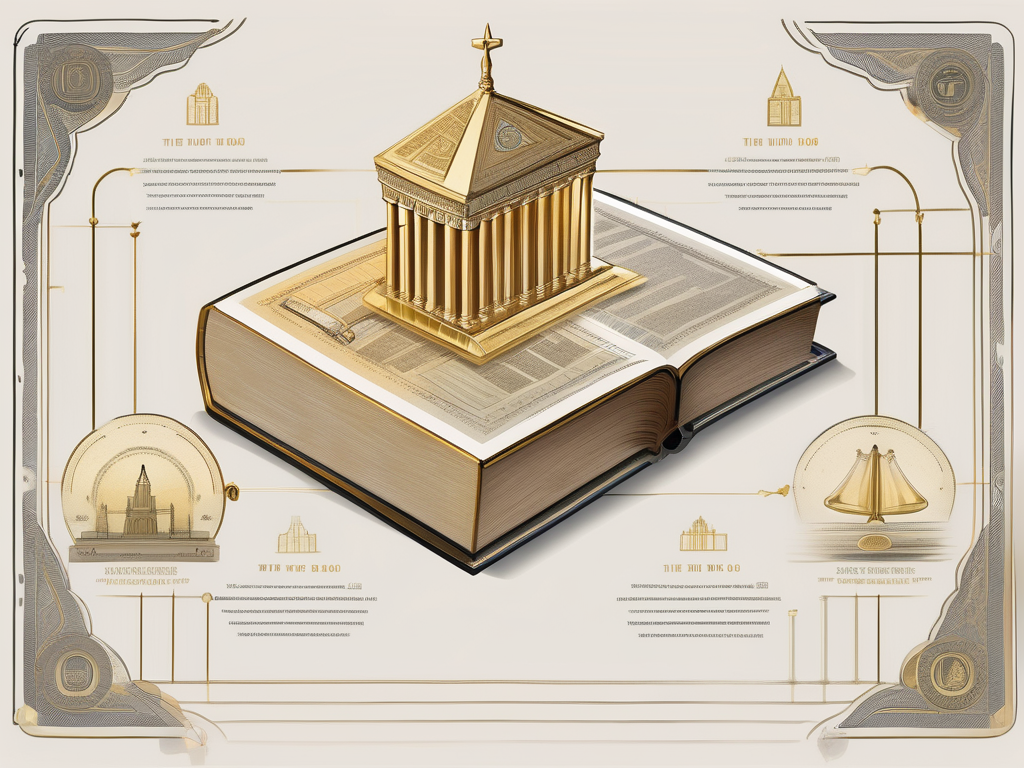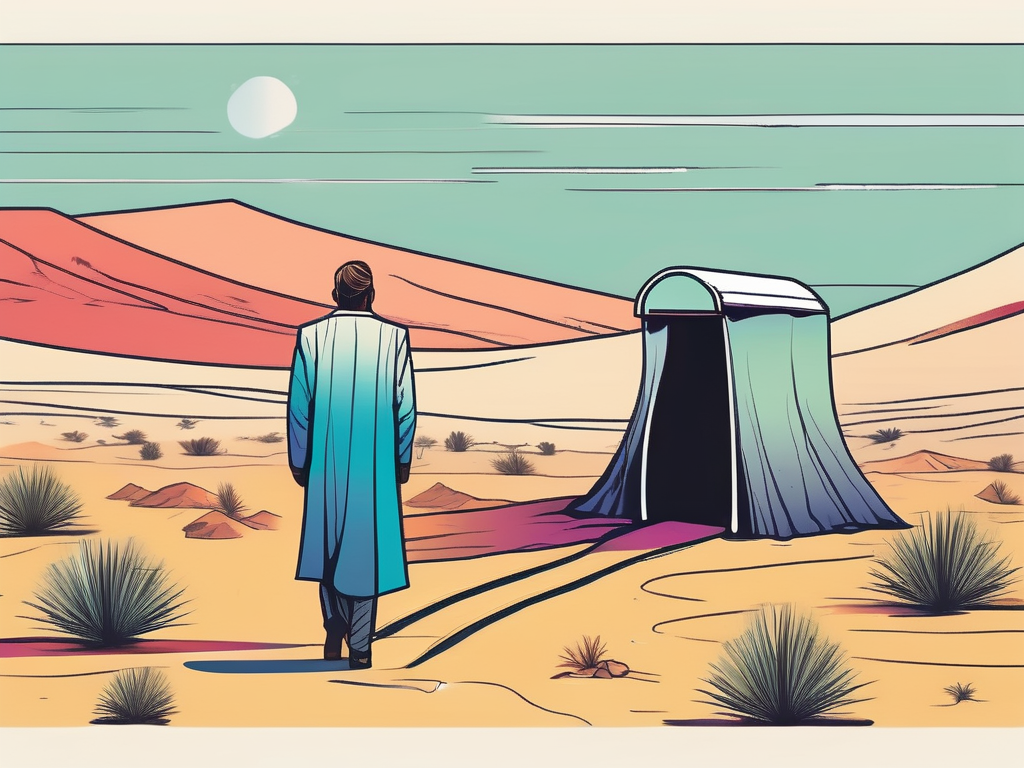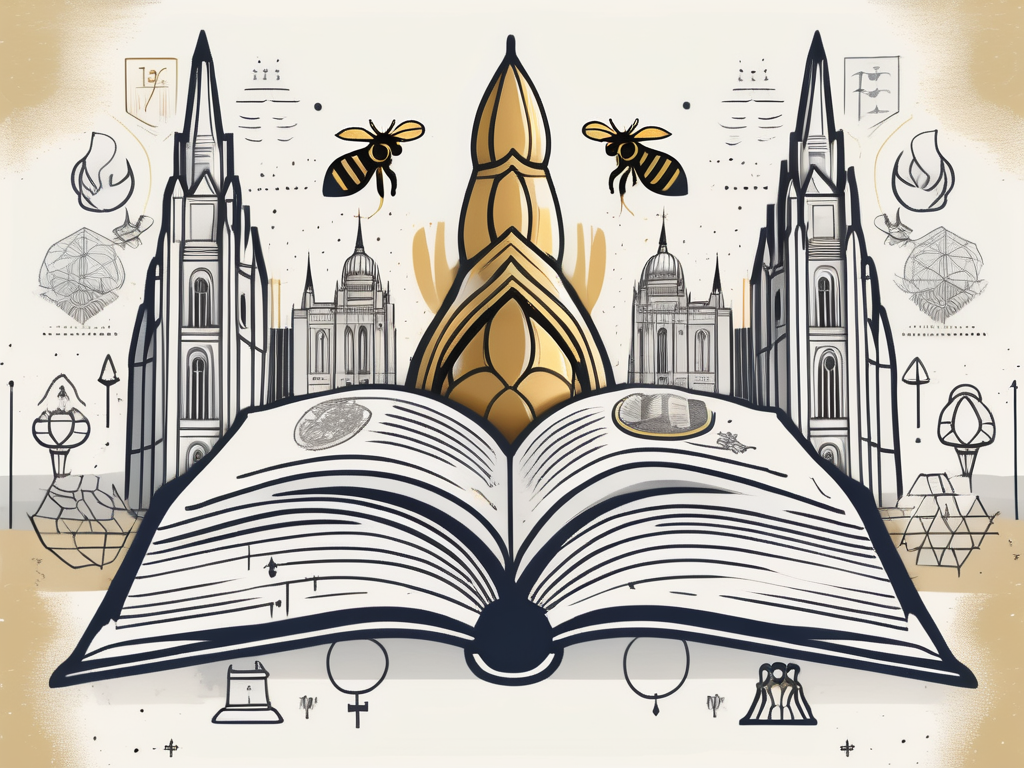The founder of the Mormon Church, Joseph Smith, is a figure who holds immense significance in the history of American religion. Born on December 23, 1805, in Sharon, Vermont, Joseph Smith’s early life set the stage for his remarkable journey. Let’s delve into his fascinating story and explore the key events and teachings that shaped the Mormon Church as we know it today.
The Early Life of Joseph Smith
Joseph Smith was born into a humble farming family. His parents, Joseph Smith Sr. and Lucy Mack Smith, instilled in him strong values of hard work, faith, and moral integrity. Growing up in a deeply religious environment, young Joseph was exposed to various religious influences that would play a significant role in his spiritual development.
Birth and Family Background
On a cold winter day in Sharon, Vermont, Joseph Smith Jr. came into the world. He was the fourth of eleven children born to Joseph and Lucy Smith. Their family led a modest life, moving several times across Vermont and New Hampshire in pursuit of better opportunities.
Despite the challenges they faced, the Smith family found solace and strength in their shared faith. They were part of the Congregationalist tradition, a popular religious movement in New England during that time. The family’s devotion to their religious beliefs provided them with a sense of purpose and guidance.
Joseph’s parents, Joseph Smith Sr. and Lucy Mack Smith, were devout followers of the Congregationalist faith. They taught their children the importance of prayer, scripture study, and living a virtuous life. The Smith household was filled with love, laughter, and a deep sense of spirituality.
Education and Religious Influences
Despite limited formal education, Joseph Smith had a curious and inquisitive mind. He immersed himself in religious books, seeking answers to the big questions about the nature of God, Jesus Christ, and the purpose of life. This thirst for spiritual knowledge led him on a path of religious exploration.
In his quest for truth, Joseph encountered different religious groups and individuals who left a lasting impact on his spiritual journey. Among them were Restorationist preachers who preached about the need for a return to the primitive Christianity of the early apostolic era. These preachers emphasized the importance of personal revelation and a direct relationship with God.
As Joseph grew older, his religious experiences became more profound. He had visions and dreams that filled him with a sense of awe and wonder. These spiritual encounters further fueled his desire to find the true church and understand God’s plan for humanity.
Joseph’s religious journey was not without its challenges. He faced skepticism and criticism from those who doubted his visions and revelations. However, his unwavering faith and conviction allowed him to persevere and continue his search for religious truth.
The early life of Joseph Smith was marked by a deep sense of spirituality, intellectual curiosity, and a longing for religious truth. His upbringing in a devout family, coupled with encounters with various religious influences, laid the foundation for his future role as the founder of the Church of Jesus Christ of Latter-day Saints.
The Founding of the Mormon Church
In the early 1820s, Joseph Smith experienced two profound revelations that would reshape his life. These revelations, known as the First Vision and the visitation of the angel Moroni, formed the basis of his prophetic mission.
The First Vision
It was in the spring of 1820, in the sacred grove near his family’s farm, that Joseph Smith had his First Vision. According to his account, he sought divine guidance through prayer to discern which church he should join. In response, the heavens opened, and God the Father and Jesus Christ appeared to him, ushering in a new era of religious restoration.
This theophany marked the beginning of a series of heavenly visitations and revelations that Joseph would receive in the years to come.
In the First Vision, Joseph Smith was given a glimpse into the true nature of God and the importance of personal revelation. This experience set him on a path to seek further knowledge and understanding of God’s plan for humanity.
Following the First Vision, Joseph Smith shared his experience with his family and close friends, sparking discussions and debates about religion and the nature of God. This event became a pivotal moment in the formation of the Mormon Church, as it laid the foundation for the unique beliefs and practices that would distinguish it from other Christian denominations.
Translation of the Book of Mormon
One of the most significant events in Joseph Smith’s life was the translation of the Book of Mormon. According to his account, an angel named Moroni directed him to a hidden record written on golden plates, buried in a hill near his home. With divine assistance, Joseph translated the ancient text, which contained the religious history and teachings of an ancient American civilization.
The process of translating the Book of Mormon was a laborious one. Joseph Smith used a seer stone, known as the Urim and Thummim, to aid in the translation. As he gazed into the stone, the words of the ancient prophets would appear, and Joseph would dictate them to his scribes.
The translation of the Book of Mormon took several years to complete, during which Joseph faced numerous challenges and opposition. However, his unwavering faith and determination allowed him to bring forth this sacred scripture, which would become the cornerstone of the Church of Christ.
When the Book of Mormon was published in 1830, it was met with both curiosity and skepticism. However, it quickly gained a following among those who were searching for a deeper understanding of God’s word and a more personal connection to their faith.
Establishment of the Church of Christ
On April 6, 1830, Joseph Smith officially established the Church of Christ in Fayette, New York. This marked the beginning of a new religious movement that would spread rapidly, attracting individuals seeking a deeper understanding of Christianity.
The establishment of the Church of Christ was a significant milestone in the religious landscape of America. It provided a platform for individuals to come together and worship according to the principles and teachings revealed to Joseph Smith through divine revelation.
Central to the establishment of the church was the restoration of priesthood authority. According to Joseph Smith, he was visited by heavenly messengers who bestowed upon him the authority to act in God’s name and perform sacred ordinances. This restoration of priesthood authority was seen as a crucial element in the restoration of Christ’s true church on earth.
Under the leadership of Joseph Smith, the Church of Christ grew rapidly, attracting converts from various backgrounds. The teachings of the church, rooted in the Book of Mormon and the revelations received by Joseph Smith, offered a unique perspective on Christianity and emphasized the importance of personal revelation and spiritual experiences.
The establishment of the Church of Christ marked the beginning of a new era in religious history. It laid the foundation for the growth and expansion of the Mormon Church, which would eventually become known as The Church of Jesus Christ of Latter-day Saints, or the LDS Church.
Persecution and Migration
With the establishment of the Mormon Church came intense opposition and persecution. The early Saints faced numerous challenges as they sought to practice and propagate their faith.
Their unwavering commitment to their beliefs often put them at odds with their non-Mormon neighbors, leading to conflicts and hostilities. Despite facing adversity, the Mormons remained steadfast in their determination to find a place where they could freely exercise their religious beliefs.
Conflicts in Missouri
In the early 1830s, tensions escalated between the Mormons and their non-Mormon neighbors in Missouri, resulting in violent clashes and forced removals. The Mormons, seeking refuge from persecution, migrated to Caldwell County, Missouri, hoping to find a safe haven where they could practice their religion freely.
However, the conflicts persisted, with acts of aggression and discrimination against the Mormons becoming increasingly frequent. The local residents, fueled by prejudice and misinformation, viewed the Mormons as a threat to their way of life, leading to further hostility.
Despite their efforts to peacefully coexist, the Mormons faced a series of violent attacks, including the infamous Haun’s Mill Massacre in 1838, where a mob killed eighteen Mormons and injured many others. These tragic events only solidified the Mormons’ resolve to seek a new home where they could live without fear of persecution.
Eventually, the escalating tensions culminated in the expulsion of the Mormons from the state of Missouri. Forced to leave behind their homes and belongings, the Mormons embarked on a journey in search of a place where they could practice their faith in peace.
Nauvoo: The Mormon City
In 1839, the Mormons settled in Nauvoo, Illinois, establishing a thriving community. Under Joseph Smith’s leadership, Nauvoo grew rapidly, becoming one of the largest cities in Illinois at the time. The Mormons enjoyed relative peace and prosperity in Nauvoo, but opposition from local residents and politicians continued to mount.
The Mormons’ success in Nauvoo threatened the established order, leading to growing resentment among those who felt their influence and power were being challenged. Anti-Mormon sentiment spread, fueled by rumors and misinformation about the Mormons’ beliefs and practices.
However, tragedy struck on June 27, 1844, when Joseph Smith and his brother Hyrum were killed by a mob while imprisoned in Carthage, Illinois. The loss of their beloved leader sent shockwaves through the Mormon community, leaving them devastated and uncertain about their future.
Despite this devastating blow, the Mormons rallied together, determined to carry on Joseph Smith’s vision. Brigham Young emerged as the new leader, guiding the Mormons through a period of transition and uncertainty.
As the Mormons faced mounting persecution and hostility, their faith and resilience only grew stronger. They began to consider the possibility of migrating once again, in search of a place where they could establish a permanent home and practice their religion without fear of persecution.
Thus, the stage was set for the next chapter in the Mormon migration saga, as they embarked on a perilous journey that would ultimately lead them to the Great Salt Lake Valley, where they would establish the thriving community of Salt Lake City.
The Teachings and Practices Introduced by Smith
Joseph Smith’s teachings and practices form the core of Mormonism. Let’s explore some of the key beliefs and principles he introduced during his prophetic ministry.
The Concept of Plural Marriage
One of the most controversial aspects of Joseph Smith’s teachings was the principle of plural marriage, also known as polygamy. Smith taught that, under specific circumstances and divine commandment, men could enter into multiple marital relationships. Plural marriage became a central feature of Mormon practice until the church officially discontinued the practice in 1890.
This doctrine, while deeply ingrained in early Mormon history, remains a complex and often misunderstood topic.
The Word of Wisdom
Joseph Smith also revealed a health code known as the Word of Wisdom. This guidance, given in 1833, promoted principles of healthy living, abstinence from harmful substances such as tobacco and alcohol, and moderation in the consumption of meat. Today, adherence to the Word of Wisdom is considered a fundamental aspect of Mormon observance.
The Death of Joseph Smith and its Aftermath
Joseph Smith’s death left a void in Mormon leadership and sparked a contentious succession crisis.
The Events Leading to Smith’s Death
Joseph Smith’s outspokenness, charismatic leadership, and the controversial nature of his teachings drew significant opposition from both within and outside the Mormon community. This culminated in his arrest and subsequent imprisonment in Carthage, Illinois, where he met his tragic end at the hands of a mob on June 27, 1844.
Succession Crisis and the Church’s Future
Following Joseph Smith’s death, a succession crisis unfolded, with multiple individuals vying for leadership and claiming to be his rightful successor. Ultimately, Brigham Young emerged as the leader who would guide the Mormon Church through a challenging period and lead the Saints to their eventual settlement in what is now Utah.
Despite the obstacles and trials faced by the early Mormons, their faith and determination paved the way for the growth and expansion of the Church of Jesus Christ of Latter-day Saints, which continues to flourish today.
Conclusion
The founder of the Mormon Church, Joseph Smith, left an indelible mark on the religious landscape of America. From his humble beginnings to the establishment of a thriving religious movement, Joseph Smith’s life was marked by divine encounters, persecution, and the introduction of significant teachings and practices. The legacy of Joseph Smith and the Mormon Church continues to resonate, inspiring millions to seek spiritual truth and live according to the principles he espoused.
